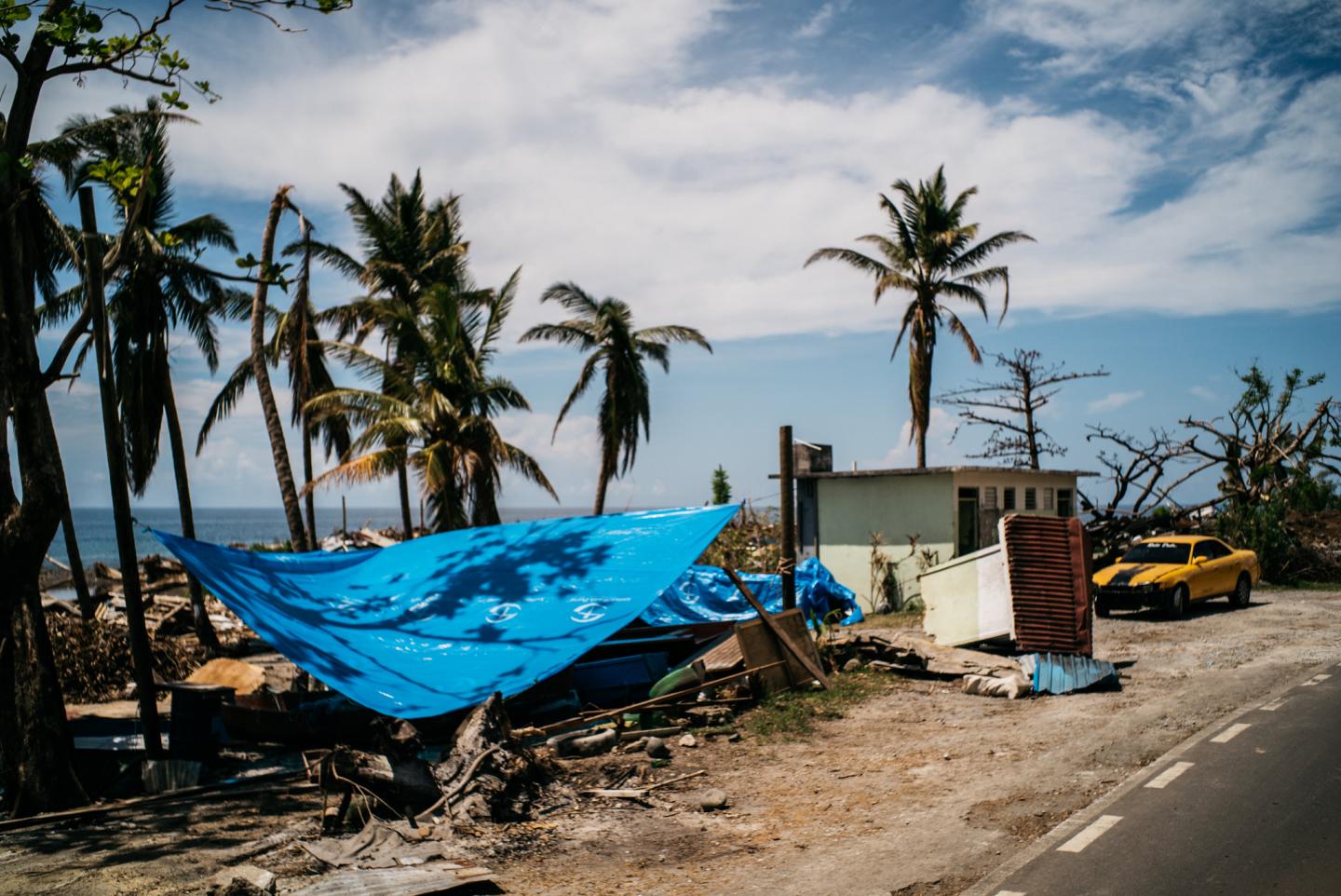How Safe Can We Feel? Towards the pursuit of resilience in Latin America and the Caribbean
How Safe Can We Feel? Towards the pursuit of resilience in Latin America and the Caribbean United Nations Development Programme


Regional context

Every day, we hear news about communities affected by earthquakes, floods, landslides, water shortages, forest fires, and other events. This growing impact leads us to wonder how safe our families, belongings, and investments are, as well as everything related to our homes, jobs, businesses, and services. It seems that from one day to the next, from one year to the next, or within decades (on the scale of climate change), everything could change.
Statistics indicate that the frequency, magnitude, and impact of crises and disasters continue to increase in Latin America and Caribbean (LAC). With only 9% of the world’s population, between 1997 and 2017, our region was affected by one in every four disasters globally (UNDRR, 2021). The situation is even worse if we review the percentage of economic losses from climate events, as 53% of the world’s economic losses are recorded in LAC. These figures, without doubt, can be explained by high exposure to hazards and the vulnerability built up along our development process.
On the other hand, one cannot ignore the fact that this condition is not homogeneous; instead, it is closely interlinked with high levels of inequality in the region’s countries in terms of access to safe land and housing, decent employment, or quality services; in other words, access to opportunities to escape poverty in all its dimensions (UNDP, 2023). Thus, families at higher risk of disasters often also face risks of gender-based violence, public safety issues, social conflicts, human mobility, or the risk of losing employment due to internal or external economic factors.
Resilience under a multidimensional, prospective, and transformative vision
Resilience is traditionally conceived as the ability of an individual or community to withstand, respond to, and recover from a crisis. In the past two decades, it has been widely used in relation to disaster risk management, initially to achieve or maintain an acceptable level of functioning and structure. This led to strengthening reactive strategies aimed at disaster preparedness, particularly in the face of climate events.
However, the term can be used with a broader perspective linked to a human development vision. This implies that the pursuit of resilience should be based on a deeper analysis of the factors (social, economic, and environmental) that determine risks, as well as the capabilities that individuals and communities have developed to meet them and to adapt to the territories they occupy. From this multidimensional analysis of the root causes of risk—be it disasters, public safety, social and political conflicts, migration—, the transformation of both, the factors that limit development, and the elements that affect the safety of an individual or a community, can be promoted.
Building resilience is a common element in disaster risk reduction, climate change mitigation and adaptation, and poverty reduction agendas. This concern arises from the need to protect progress made in development processes from continuous pressures and periods of crisis, but also to ensure that development does not exacerbate inequalities and vulnerabilities, and that the occurrence of disaster events and climate change does not divert the achievement of sustainable development goals (SDGs). Achieving the SDGs requires incorporating investments related to the pursuit of resilience into planning and budgeting at all levels. In turn, dividends from investing in safer processes will provide more resources for reinvesting in development (UNDP, 2021).
In this sense, UNDP promotes an intervention that reduces current risk conditions but also projects the analysis of future risk scenarios with the intent of proposing prospective actions. This is not an easy task, primarily considering the urgency of solving immediate problems and the short-term nature of decision-making. This change involves, first and foremost, strengthening risk governance; e.g., improving intersectoral and interterritorial coordination, promoting citizen and private sector participation, increasing public and private investment, as well as developing monitoring and accountability mechanisms.
Similarly, building resilience requires an intervention grounded in the territory, adapted to environmental conditions and social and economic dynamics. In Latin America and the Caribbean, a particularly relevant area of intervention is urban areas, considering that 80% of the population currently resides in cities. The accelerated, inequitable, and poorly planned urbanization process has led to informal human settlements with high-risk conditions. In these settlements, disaster crises, social conflicts, gender-based violence, public safety issues, and human mobility problems converge.
Two other extremely important aspects for building resilience are, on the one hand, strengthening preventive and anticipatory actions by expanding the reach of early warning systems. These must be inclusive and multi-hazard, and continuously monitor the conditions that generate and activate crisis situations. And on the other hand, strengthening recovery capacities with the intent that these post-disaster processes contribute to reducing risk conditions; and that they do not rebuild or even worsen the previous risk conditions that led to the crisis.
In the field of disaster risk management and throughout LAC, UNDP has been generating significant experiences in this regard. Notably, there are early warning systems (EWS) that promote the use of inclusive digital tools (Bahamas), and the design of community EWS for monitoring, communicating, and preparing population (e.g., Trinidad and Tobago, Ecuador, Bolivia); the integration of climate change adaptation approaches and risk management in development processes (e.g., Costa Rica, Cuba, Ecuador); development of instruments for sustainable and resilient recovery management (e.g., El Salvador, Costa Rica, Panama); and the protection of critical infrastructure, such as water services (e.g., Peru), airports (e.g., Honduras, Peru, Dominican Republic), or ports (Peru).
Recognizing the importance of this topic for the development of Latin America and the Caribbean, UNDP has prioritized resilience as the central theme of the upcoming 2025 Human Development Report. The goal is to promote safer development processes for everyone in the region, by analyzing the characteristics, potential, and opportunities for building resilience, considering the diverse contexts and interconnected crises.
[1] Regional Assessment Report on disaster risk in Latin America and the Caribbean (RAR 2021) [2] The Multidimensional Poverty Index with a focus on women for Latin America and the Caribbean (UNDP, 2023) indicates that disasters impact women’s economic autonomy by increasing the burden of unpaid care work; and disrupting their sources of employment and, especially in the case of rural women, their livelihoods. [3] Particularly in SDG 01-Poverty Reduction, 11-Sustainable Cities and Communities, 13-Climate
SDGs, Targets, and Indicators
1. Which SDGs are addressed or connected to the issues highlighted in the article?
- SDG 01: No Poverty
- SDG 11: Sustainable Cities and Communities
- SDG 13: Climate Action
- SDG 16: Peace, Justice, and Strong Institutions
The article discusses issues related to disasters, climate change, poverty, inequality, urbanization, and risk management. These issues are directly connected to the SDGs mentioned above.
2. What specific targets under those SDGs can be identified based on the article’s content?
- SDG 01.5: By 2030, build the resilience of the poor and those in vulnerable situations and reduce their exposure and vulnerability to climate-related extreme events and other economic, social, and environmental shocks and disasters.
- SDG 11.5: By 2030, significantly reduce the number of deaths and the number of people affected and substantially decrease the direct economic losses relative to global gross domestic product caused by disasters, including water-related disasters, with a focus on protecting the poor and people in vulnerable situations.
- SDG 13.1: Strengthen resilience and adaptive capacity to climate-related hazards and natural disasters in all countries.
- SDG 16.1: Significantly reduce all forms of violence and related death rates everywhere.
These targets address the need to build resilience, reduce vulnerability to disasters, protect the poor and vulnerable, strengthen adaptive capacity to climate change, and reduce violence.
3. Are there any indicators mentioned or implied in the article that can be used to measure progress towards the identified targets?
- Indicator 1.5.1: Number of deaths, missing persons, and directly affected persons attributed to disasters per 100,000 population.
- Indicator 11.5.1: Number of deaths, missing persons, and directly affected persons attributed to disasters per 100,000 population.
- Indicator 13.1.1: Number of deaths, missing persons, and directly affected persons attributed to disasters per 100,000 population.
- Indicator 16.1.1: Number of victims of intentional homicide per 100,000 population, by sex and age.
These indicators can be used to measure the progress towards the identified targets by tracking the number of deaths, missing persons, and directly affected persons attributed to disasters and violence.
SDGs, Targets, and Indicators Table
| SDGs | Targets | Indicators |
|---|---|---|
| SDG 01: No Poverty | Target 01.5: Build the resilience of the poor and those in vulnerable situations | Indicator 1.5.1: Number of deaths, missing persons, and directly affected persons attributed to disasters per 100,000 population |
| SDG 11: Sustainable Cities and Communities | Target 11.5: Reduce the number of deaths and people affected by disasters | Indicator 11.5.1: Number of deaths, missing persons, and directly affected persons attributed to disasters per 100,000 population |
| SDG 13: Climate Action | Target 13.1: Strengthen resilience and adaptive capacity to climate-related hazards and natural disasters | Indicator 13.1.1: Number of deaths, missing persons, and directly affected persons attributed to disasters per 100,000 population |
| SDG 16: Peace, Justice, and Strong Institutions | Target 16.1: Reduce all forms of violence and related death rates | Indicator 16.1.1: Number of victims of intentional homicide per 100,000 population, by sex and age |
Behold! This splendid article springs forth from the wellspring of knowledge, shaped by a wondrous proprietary AI technology that delved into a vast ocean of data, illuminating the path towards the Sustainable Development Goals. Remember that all rights are reserved by SDG Investors LLC, empowering us to champion progress together.
Source: undp.org

Join us, as fellow seekers of change, on a transformative journey at https://sdgtalks.ai/welcome, where you can become a member and actively contribute to shaping a brighter future.







